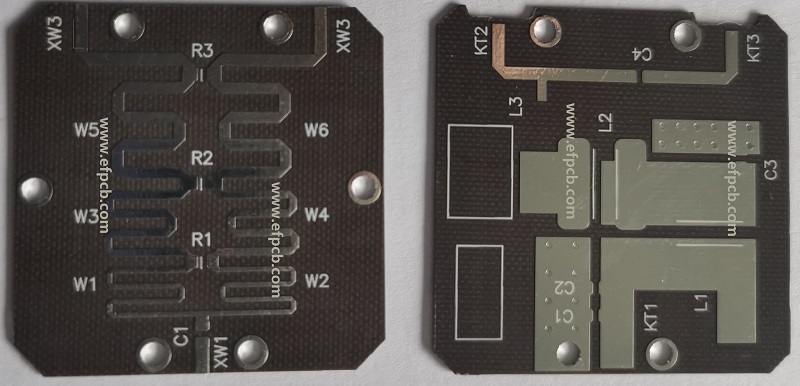Focus on the Design Factor of RF PCB Circuit

Keywords: Radio Frequency PCB
Summary for RF PCB
High-frequency radio frequency (RF) designs need careful routing and planning to avoid signal integrity issues. Sometimes a piece of a Radio Frequency PCB layout will include digital components, and proper arrangement can reduce interference between RF and digital signals. Learn more about RF PCB design, layout, routing, and signal integrity by perusing the resources in our collection.
RF circuits are less understandable than conventional circuit diagrams, and occasionally a diagram may seem to go against fundamental principles of electrical design. Circuits working at RF frequencies behave substantially differently from standard integrated circuits functioning at DC or in digital bands due to the electromagnetic field's spreading nature. Pay attention to these fundamentals of microwave engineering whether you're creating a system for wireless communication or just need to create a transmission line with certain impedance.
Circuits Characteristic for RF Printed Circuit Board
Copper traces are used to construct circuit components in printed areas of an RF circuit board design. An RF circuit's configurations of traces, capacitor or inductor components, and semiconductors may seem counterintuitive, but they work by utilizing the electromagnetic field's propagation behavior to create the required electrical behavior. Regarding RF circuit design and the electrical behavior of RF circuits on a PCB, it's crucial to keep the following in mind:
- RF circuits made of printed traces are always linear, which means that the relationship between the voltage and the current is linear (straight line on a graph). These circuits can only be made nonlinear by including a nonlinear semiconducting element like a diode.
- Passivity: Unless an active off-the-shelf component is incorporated into the design, all printed RF circuits are passive. However, research is being done on active RF parts made solely of printed traces.
- Signal integrity: Since RF transmissions must be as noise-free as possible; RF signal integrity depends on electromagnetic shielding and isolation. To assist in supplying the necessary shielding and isolation in RF systems, several innovative shielding structures and designing strategies have been developed.
- Wave propagation: It is a factor that all RF circuit designs rely on. This implies that while figuring out how to match impedances throughout a circuit and how to construct interfaces between various parts of a Radio Frequency PCB circuit design, input impedances must be employed.




